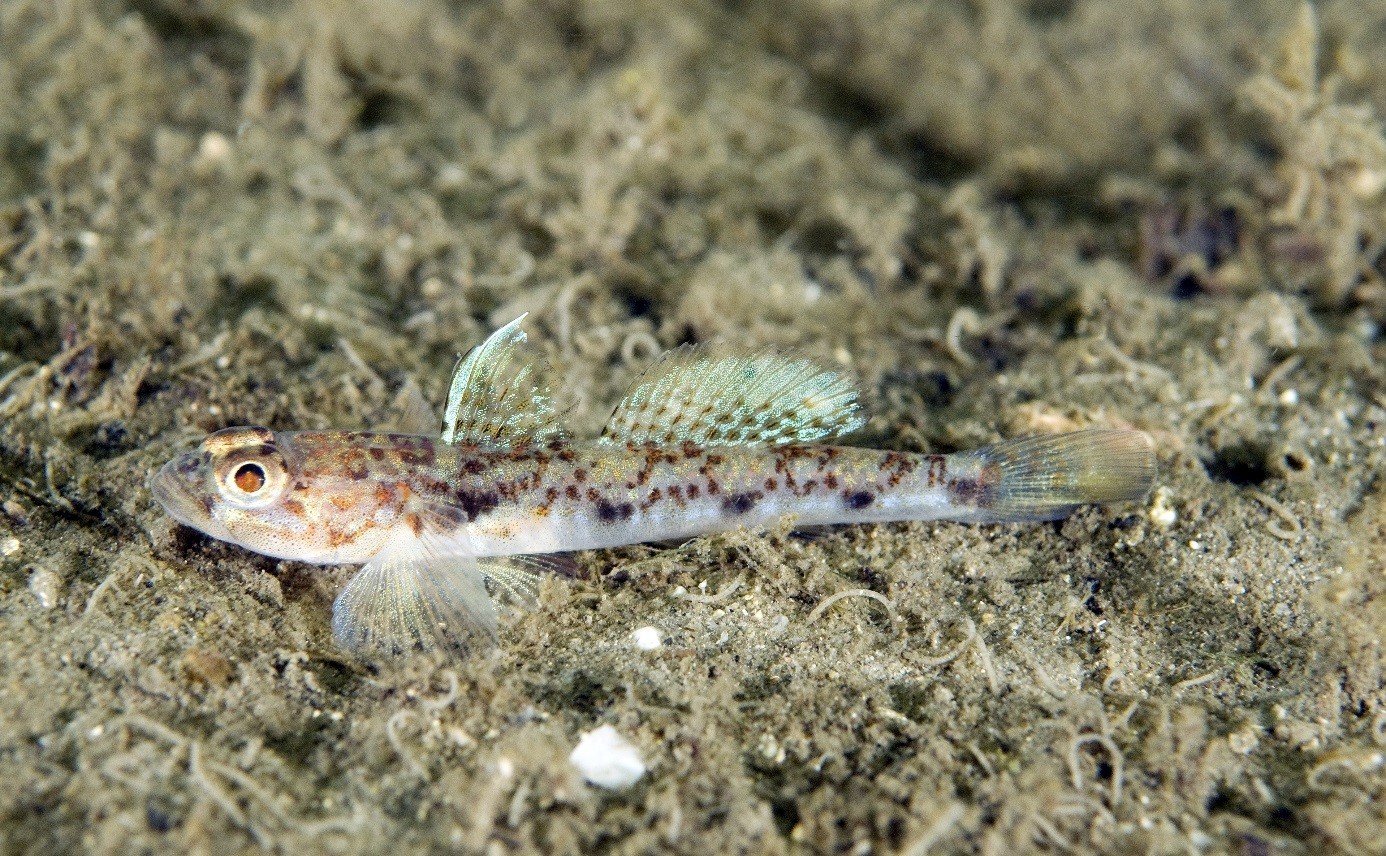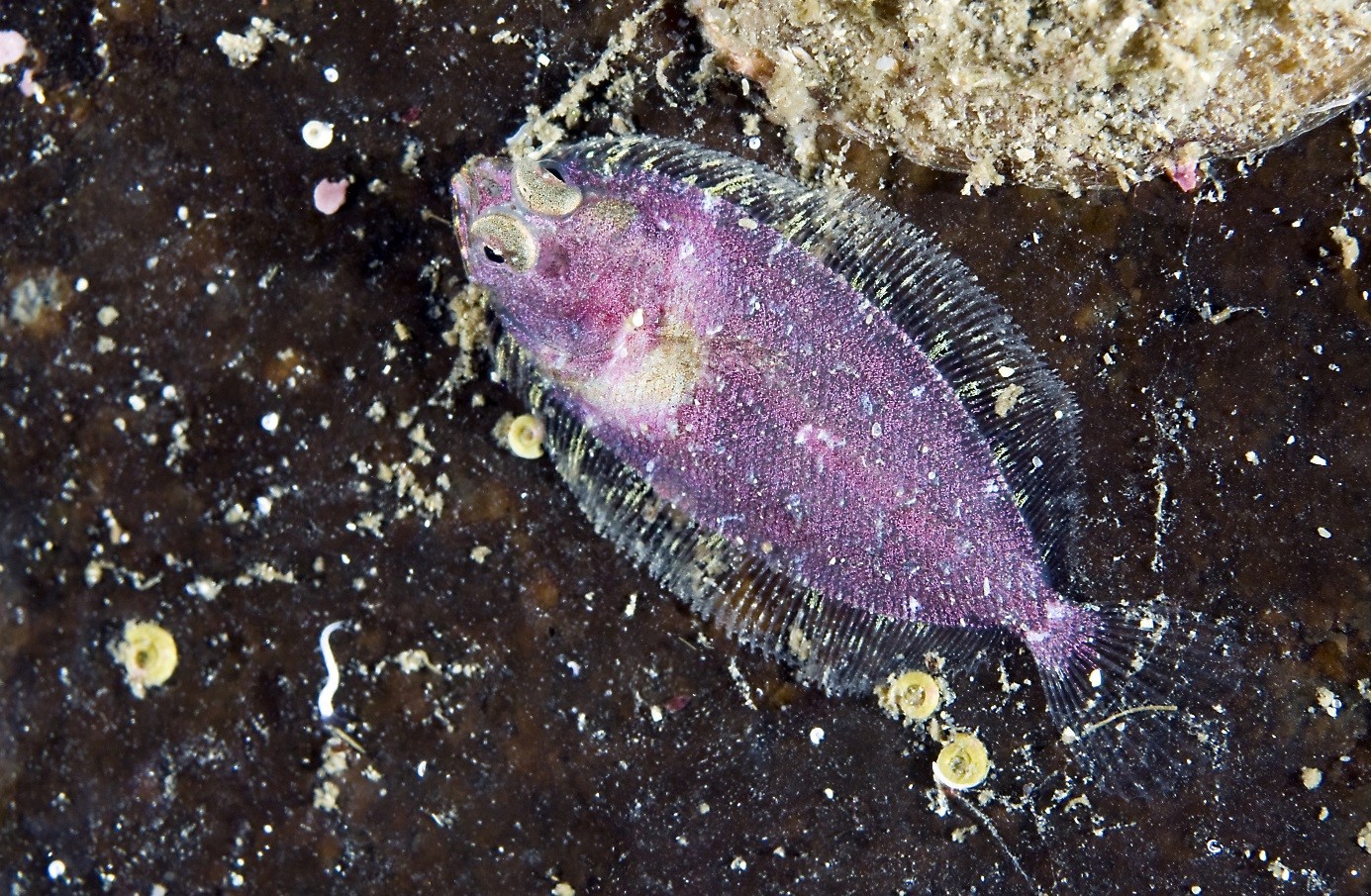The first Jeffrey's goby caught on a fishing rod in Norway has arrived at Museum Stavanger.

Gjermund Daniel Nomeland with the first Jeffrey's goby caught on a fishing rod in Norway. Photo private.
One of the main tasks of a museum, is to take care of the collections on behalf of the society. For the natural history department this includes, among others, objects as mammals, birds, insects and fishes. These collections represent documentation of natural history and at the same time the objects are used for science. Currently the natural history department has its focus on establishing a collection of marine animals from our local shoreline.

A male Jeffrey's goby (Buenia jeffreysii) photographed in situ.
Three weeks ago the first 3 Jeffrey's goby ever caught on a fishing rod was delivered to our department. They were all caught in a bay in Lysefjorden, famous among fish species hunters for the diversity off small rare fishes. You can read a Norwegian story about the first catch here : https://www.fiskeavisen.no/ver...
The Lysefjord is a hot spot for people who want to catch small rare fishes, and species hunters from all over Norway visit this location to catch fishes almost no one know exist. This may sound strange and useless to ordinary people, but the truth is that these anglers help collect information about these fishes and also the areas where they live. They regularly supply our collection with new strange fishes and their knowledge and data have currently been used in 3 scientific papers about distributions and diversity of gobies along the Norwegian shoreline. Some of the data used in the scientific papers was extracted from www.artsfiske.com which is a database where anglers register their data.

Male spotted dragonet (Callionymus maculatus).
Other rare fishes that is found on this spot is reticulated dragonet (Callionymus reticulata), spotted dragonet (Callionymus maculatus), moustache sculpin (Triglops murrayi) and Norwegian topknot (Phrynorhombus norvegicus).

Moustache sculpin (Triglops murrayi)

A male Reticulated dragonet (Callionymus reticulata)
The natural history department cooperate both with local anglers and scuba divers to collect data about the diversity of local marine species. Two weeks ago we got 9 large beautiful nudibranches from a local diver. They were all of the species Pleurobranchus membranaceus which have only been registered 3 times in Norway before.
A swimming sea slug (Pleurobranchus membranaceus). It can reach the size of a palm.
All this is examples of citizen science and how important skilled knowledgeable “ordinary people” can contribute to collect knowledge about bio diversity through cooperation with science institutions or by registering data in “Artsobservasjoner” https://mobil.artsobservasjone...

The Norwegian topknot (Phrynorhombus norvegicus) is Norways most beautiful flatfish.
